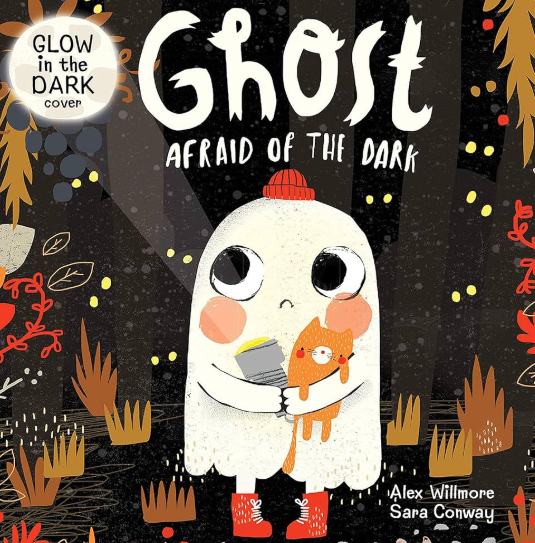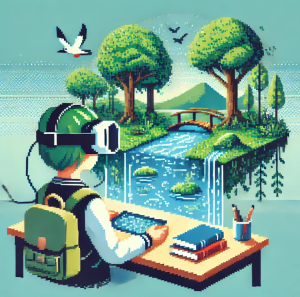
How Children’s Books Can Calm Anxiety and Build Resilience
Here’s something most parents don’t realize: bedtime stories might be shaping how kids handle fear and stress.
A new Behavior Therapy study from Temple University and Weill Cornell researchers analyzed nearly 200 children’s books about anxiety and discovered something remarkable—and a little concerning. While storybooks are often our first emotional teachers, most don’t actually show kids how to manage anxiety effectively.
In fact, more than half of books featuring an anxious character never show that character facing their fear—the single most important step in evidence-based anxiety treatment
The Science of “Bibliotherapy”
Psychologists refer to it as bibliotherapy—using books to help children understand, identify, and manage their emotions. When a character worries about being alone, fears the dark, or dreads the first day of school, children often see themselves in that story. That mirror moment can help them learn skills they might otherwise only get in therapy.
But the new study—led by Margaret Crane and colleagues—found that most children’s books miss key “practice elements” known to help anxious kids calm their minds and bodies.
Researchers looked for eight of these evidence-based elements:
- Labeling body sensations (e.g., “My heart is beating fast.”)
- Cognitive reframing (challenging scary thoughts)
- Relaxation skills (deep breathing, mindfulness)
- Problem-solving
- Exposure (facing a fear)
- Post-exposure reflection (“That wasn’t as scary as I thought!”)
- Psychoeducation (understanding what anxiety is)
- Contingency management (using praise or rewards for bravery)
On average, the books included only two of the eight elements. The most common? Thinking through worries (60%) and facing fears (46%). The least common? Praise and rewards for bravery—just 7%.

Why It Matters for Parents and Educators
Anxiety now affects one in four children globally And while therapy works, not every family can access it—especially those in rural or underserved communities.
That’s where storybooks could make a difference. Reading about a character who learns to name anxious feelings or faces a fear with gentle support can normalize anxiety and show children that courage isn’t the absence of fear—it’s what happens when you keep going anyway.
But as Crane’s team found, many books stop short of that crucial moment of bravery. The worried bunny learns to breathe deeply, but we never see her enter the classroom she’s afraid of. The nervous puppy feels scared, but no one tells him that anxiety is a normal part of learning new things.
That’s like teaching a child to swim without ever letting them touch the water.

The Good News: What Works
Not all books are created equal. The study found clear differences:
- Books written by mental health professionals model more coping skills and reflection.
- Books that included self-help sections or caregiver guides—such as breathing exercises or discussion prompts—also performed better.
- Books aimed at older kids (9–12) tended to show more advanced emotional coping skills.
That means parents, teachers, and school counselors can make more informed choices by simply checking the author’s background or flipping to the end of the book for bonus materials.
“Caregivers and librarians should look for storybooks written by therapists or those that include self-help information,” the authors recommend.
Turning Reading Into Healing
So, how can families and schools use this research right now?
- Read actively, not passively. Pause when a character feels scared. Ask, “What do you think they could do next?”
- Name the feelings. When kids can label sensations (“My tummy hurts when I’m nervous”), they gain power over them.
- Celebrate bravery. Praise small steps—raising a hand in class, sleeping without the light on, or joining a new club.
- Use storybooks as conversation starters. Pair books with short mindfulness or breathing breaks in class.
- Pick wisely. Look for books reviewed by school psychologists or written by clinicians—many now appear in public library collections or publisher guides.
Why This Study Feels Urgent
We’re living in what many educators now call the anxiety generation. School psychologists are reporting a record number of referrals for worry, panic, and avoidance behaviors. And yet, bookshelves overflow with stories about “brave bears” and “worried worms” that never quite teach what bravery looks like.
This research is a wake-up call—not to stop buying picture books about emotions, but to choose the right ones. Books can be more than entertainment; they can be an early intervention.
When a story shows a child that fear is survivable—and that growth comes from walking through it—those pages become a form of therapy.
Takeaway for Parents and Teachers
Next time you read The Worry Box or Clark Is Scared of the Dark, remember: the story is just the start. The real magic happens when adults help children connect the dots between the book and their own feelings.
Because courage isn’t learned in a single story—it’s built one bedtime at a time.
Let’s Talk About It
- What’s the biggest mental health challenge you see in your school or home today?
- Which children’s books about feelings have actually helped your students or kids?
- How can schools and parents partner to use storybooks as tools for emotional learning?



